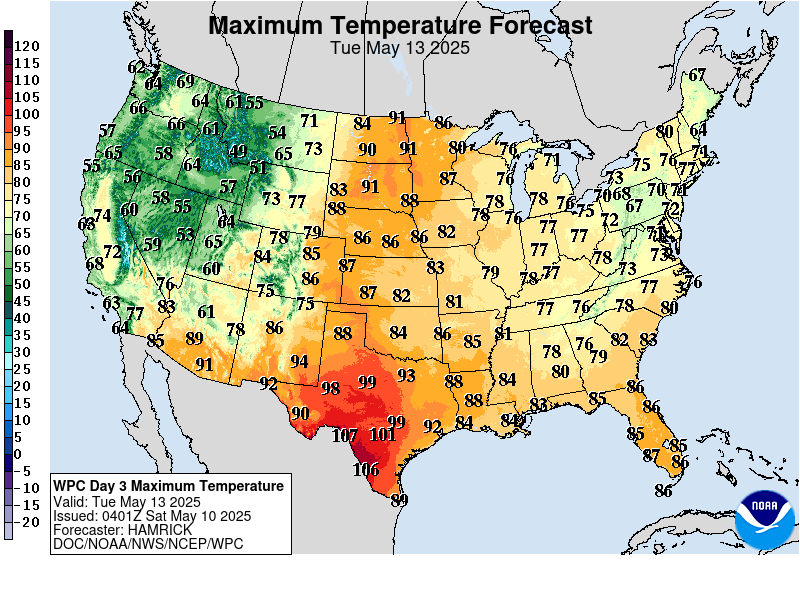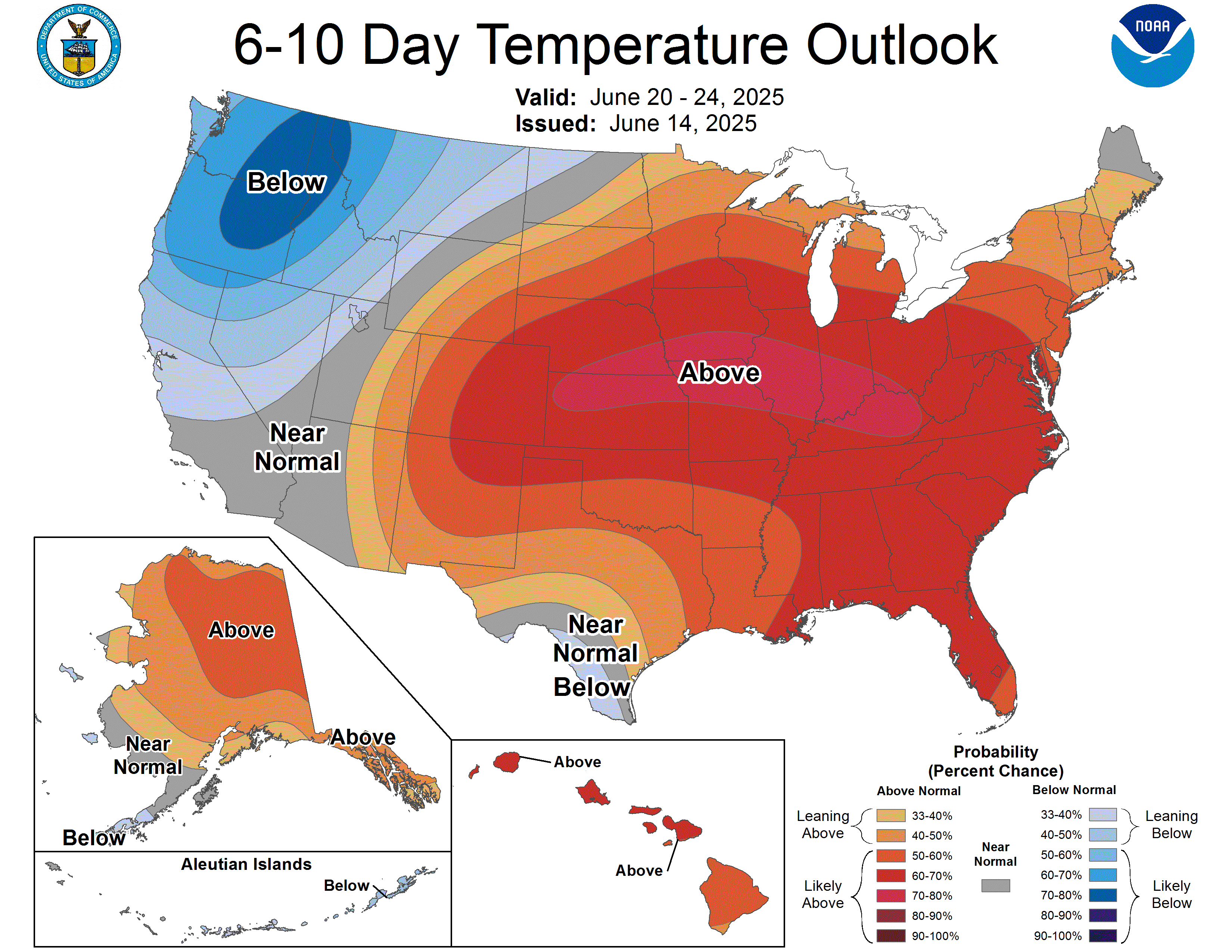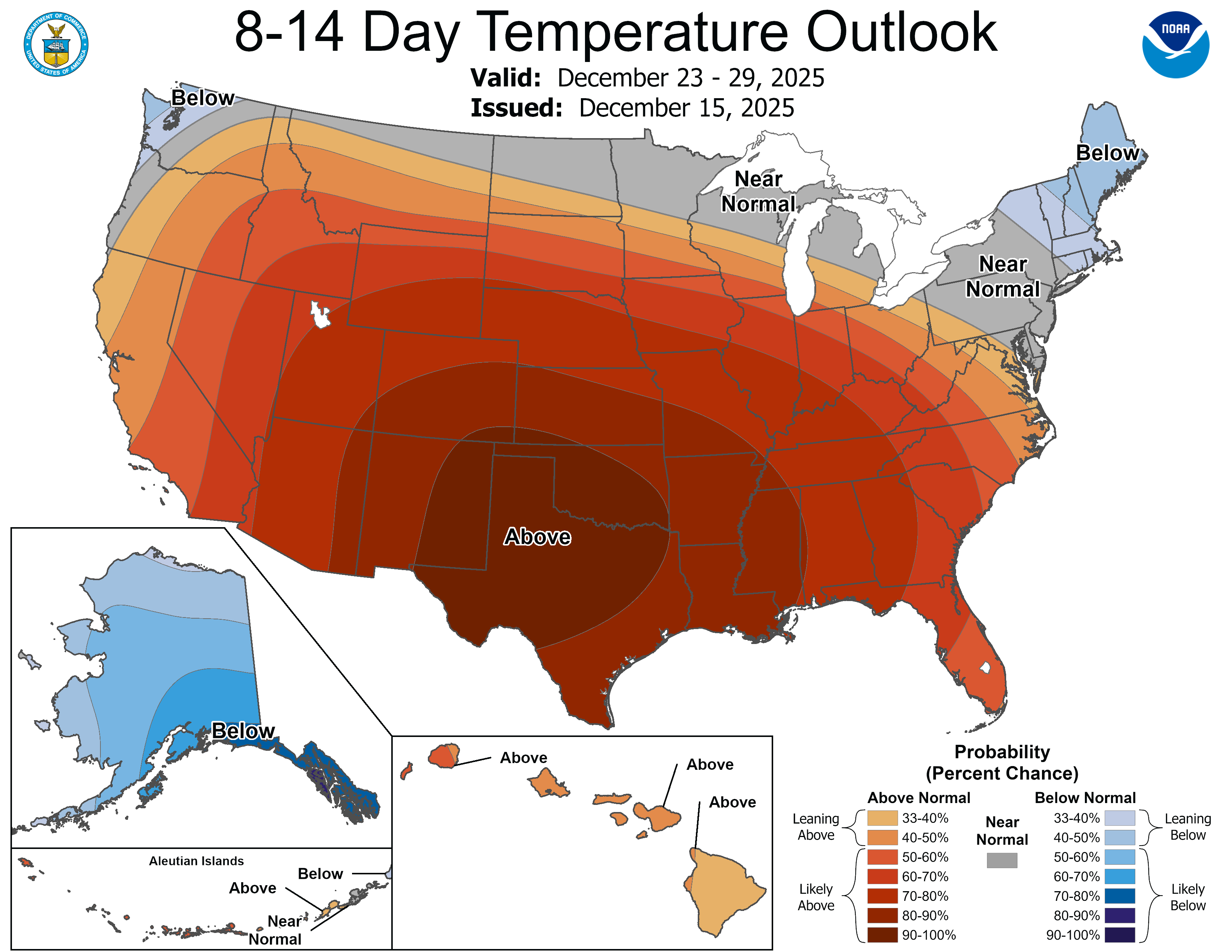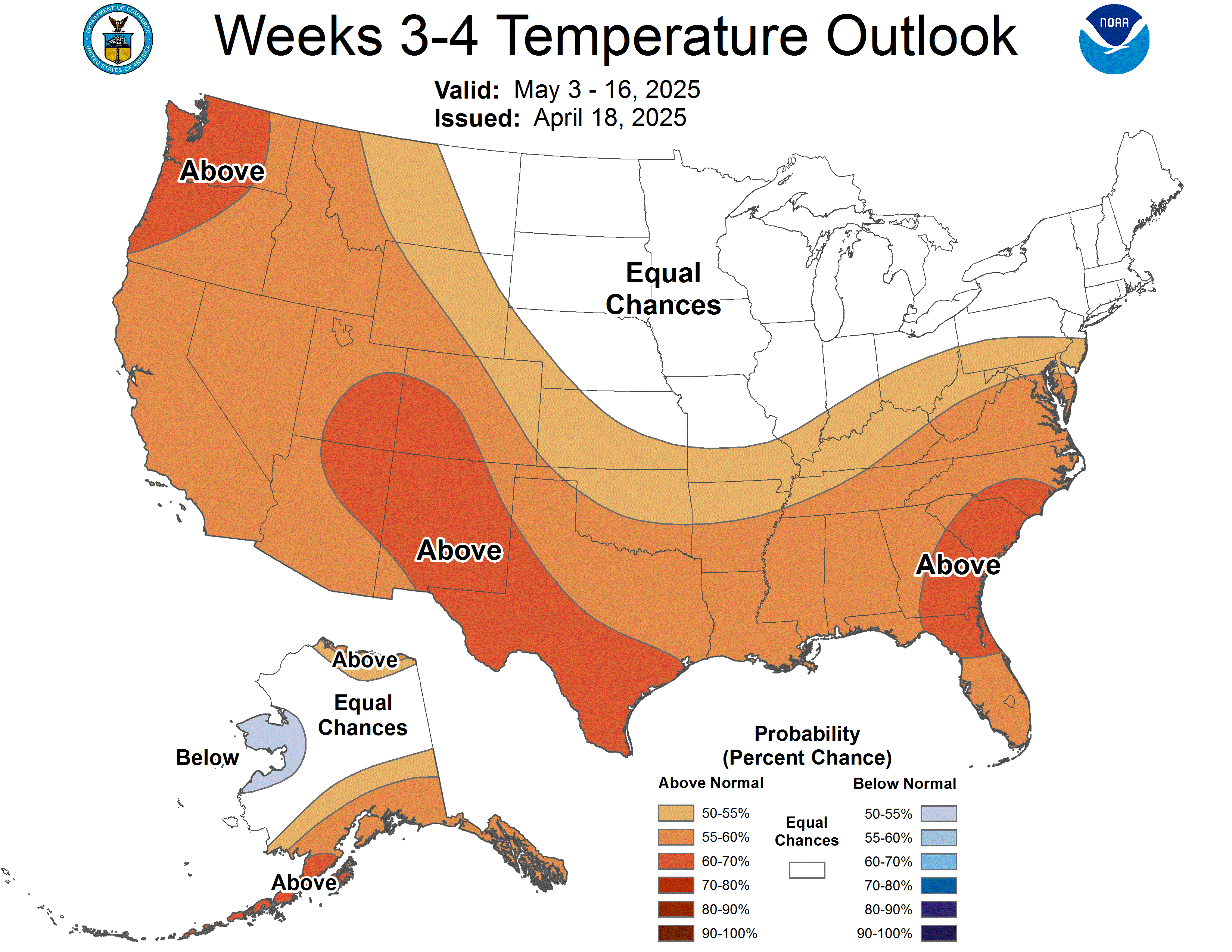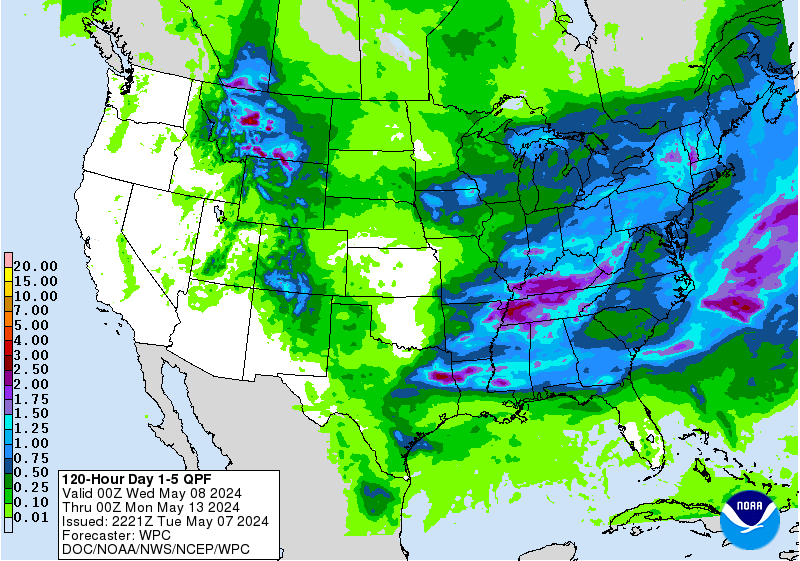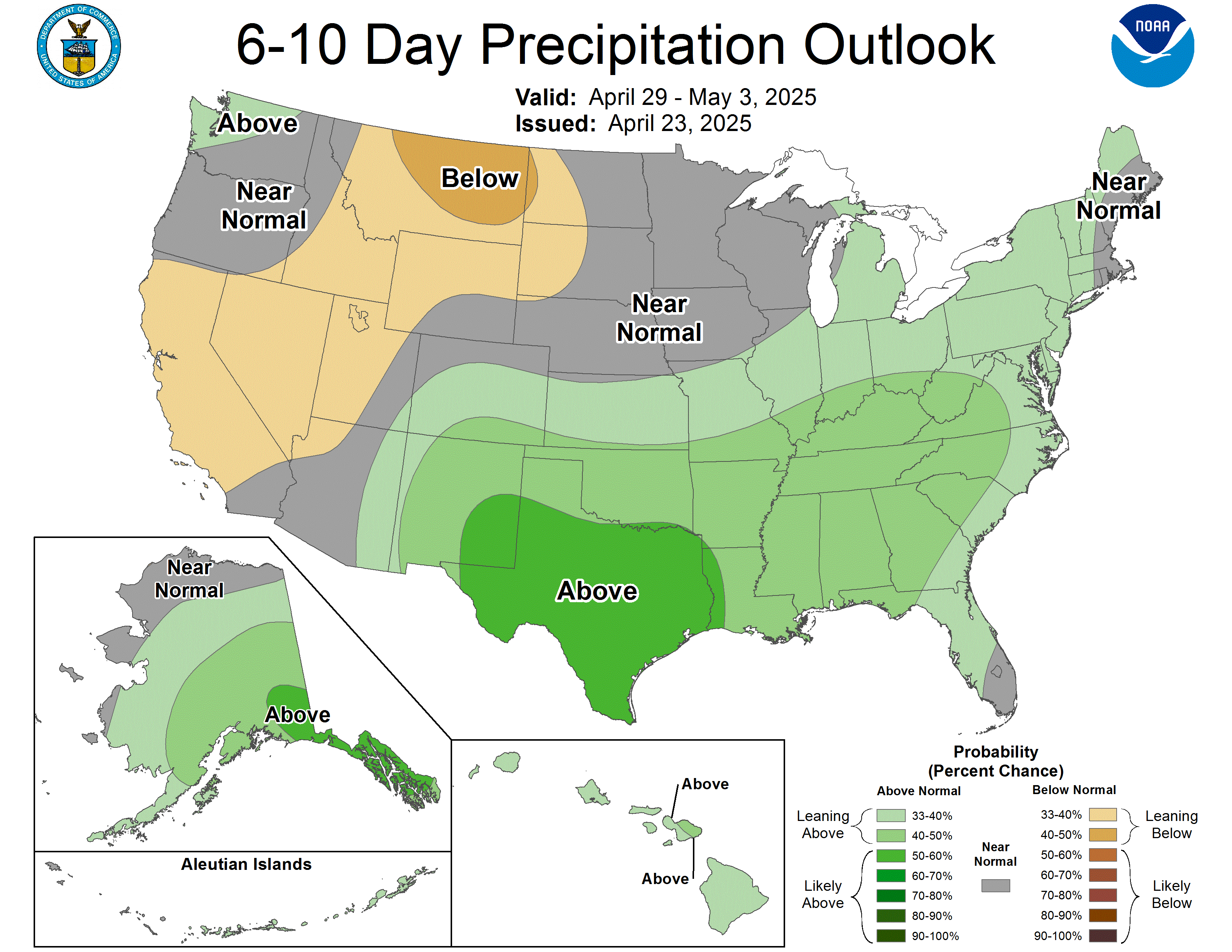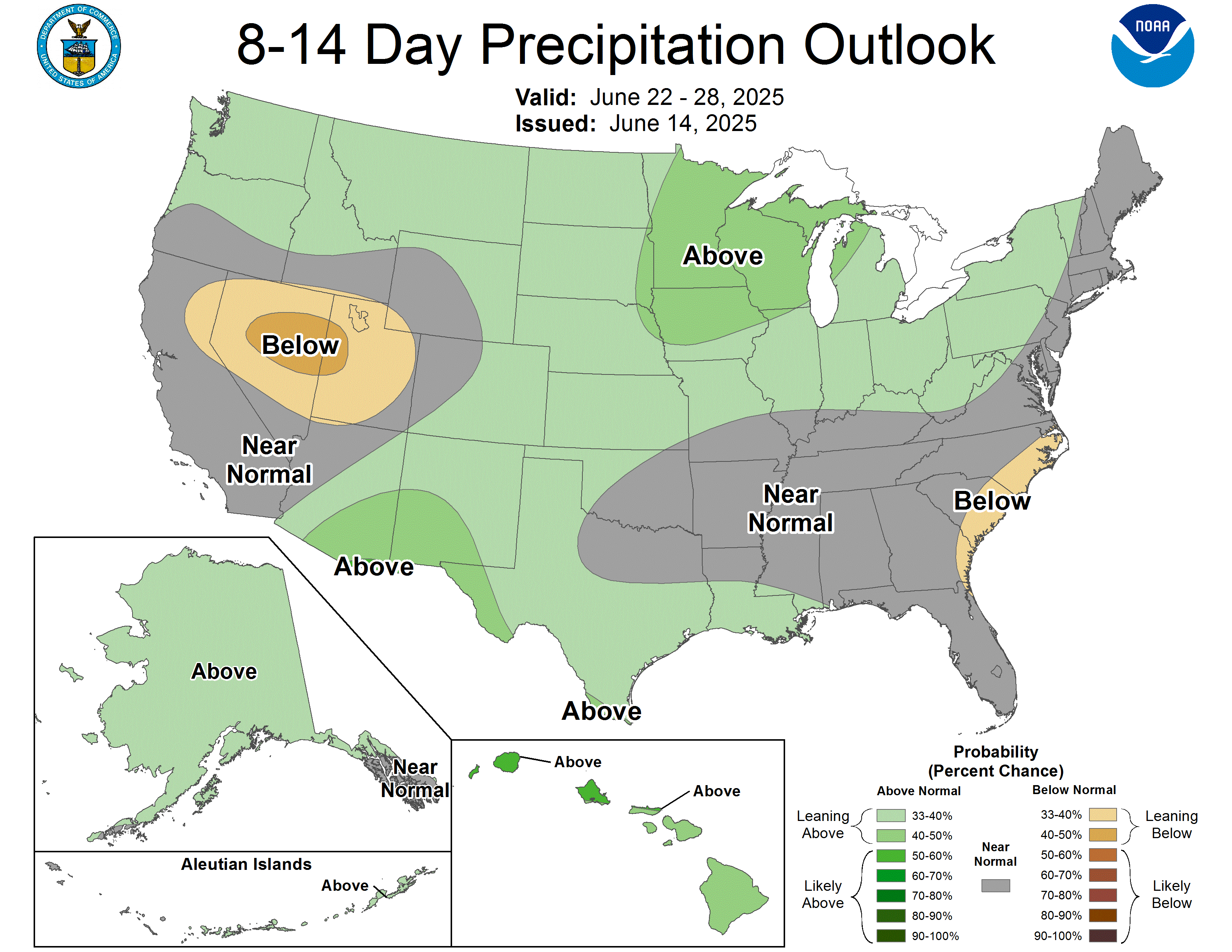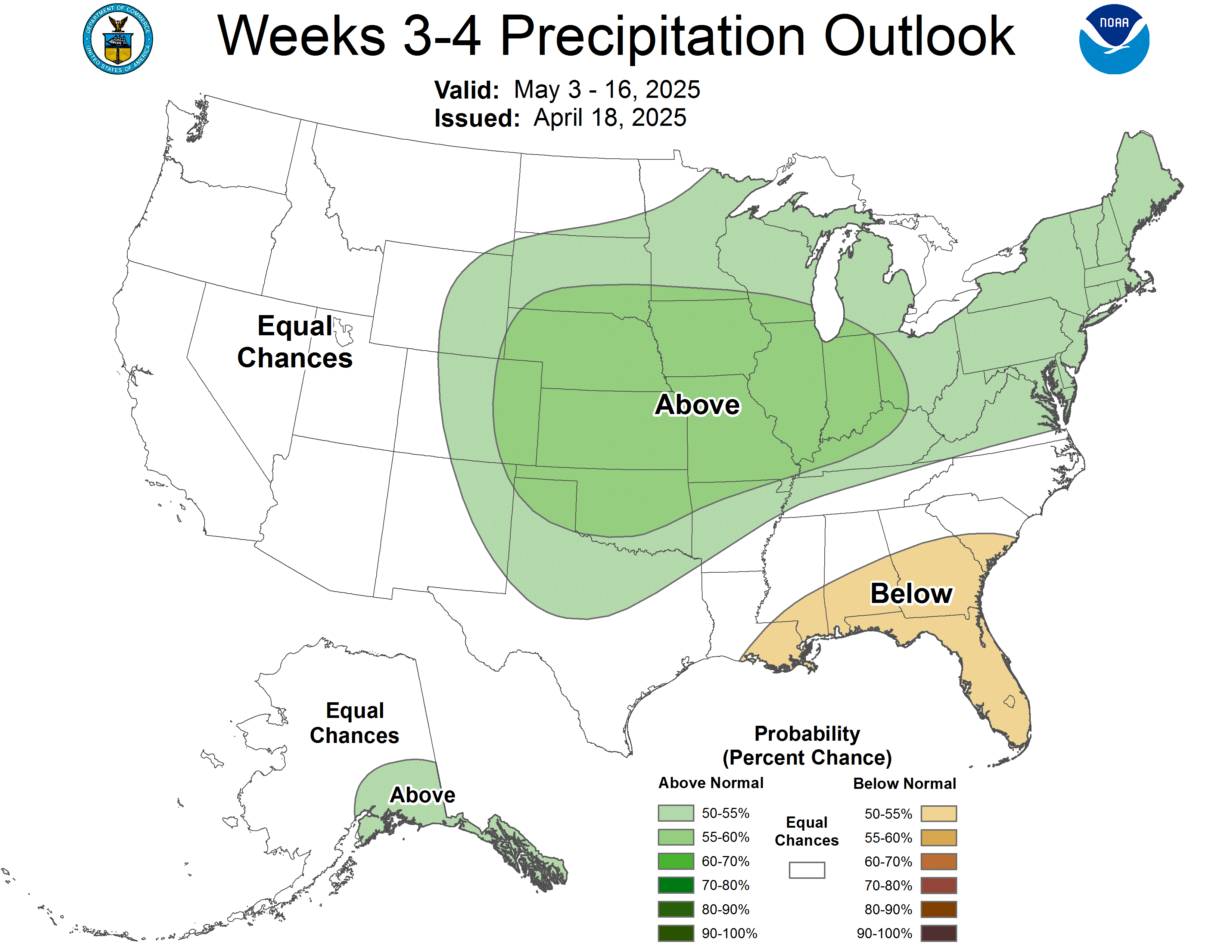Written by Sig Silber
At the end of every month, NOAA issues an update of their Early Outlook for the following month – in this case June. The Early Outlook as usual, together with their Four-Season forecast, was issued on the Third Thursday of the month. Now, eleven days later, there have been some significant changes. The June Drought Forecast was also issued today and is quite interesting. Is the change from the Seasonal Drought Forecast significant or just random variability? It is not possible to tell at this point. We expect a rotation of the drought area at some point but it will not be more than a tease unless it persists into autumn.

Some housekeeping: On May 20, 2021, we published Part I of our analysis of the NOAA Four -Season Outlook and that can be accessed here. In that report, the June 2021 Early Outlook was issued. This article presents the NOAA update of their Early temperature and precipitation Outlooks for June and the Drought Forecast for the month of June.
Please share this article – Go to the very top of the page, right-hand side for social media buttons. Also, feel free to send this article to anyone you feel will benefit from it. You can find the latest version of all our weather articles by consulting the Directory by clicking here and then clicking on the latest version of the article which is of interest to you.
First, we will compare the NOAA Early Outlook for June 2021 with the newly issued update.
Early Outlook Temperature

Updated Temperature Forecast

Early Outlook Precipitation

Updated Precipitation Forecast

Here we compare the prior forecast to the new forecast as above but in a more compact format. This is simply the maps already presented organized in a different way to make comparison easier. Later, we show the forecast for almost the entire month broken into four parts.
| May 20, 2021 Forecast for June 2021 | May 31, 2021, Forecast for June 2021 | |
| Temperature | ||
| Precipitation |
Here is the discussion released with the forecast.
30-DAY OUTLOOK DISCUSSION FOR JUNE 2021
The update to the June 2021 temperature and precipitation outlooks are driven primarily by the most recent short-, medium- and extended-range model guidance as well as the most recently available subseasonal and monthly integrated forecast products. The MJO has become less coherent in recent weeks and does not play as much of a role in the updated outlook, while soil moisture anomalies continued to inform the June temperature outlook.
Changes to the June temperature outlook are generally small overall. The outlook continues to favor above-normal temperatures in an inverted horseshoe pattern encompassing areas from the Southwest CONUS to the Pacific Northwest across the northern Plains and Great Lakes to the Northeast and mid-Atlantic. Strong ridging anticipated during much of the first half of June increases odds for above-normal temperatures for the Northeast, Great Lakes and mid-Atlantic compared to the mid-month outlook. Also, highest probabilities for above-normal temperatures in the western CONUS have been shifted to the northwest and are now focused in the central Great Basin and western Rockies where ridging and warmer-than-normal temperatures (some potentially extreme) are likely during the first week of June.
The most substantial change in the updated June outlook, is the inclusion of favored below-normal temperatures for the southern Plains, lower Mississippi Valley and western Gulf coast. The mid-month outlook did note the uncertainty in this region and potential cooler temperatures with a forecast area of Equal-Chances (EC) due to negative 500-hPa heights indicative of weakened sub-tropical ridging and enhanced cloudiness and precipitation. Model guidance through the end of May 2021 across time scales has become more clear and increased the likelihood of the conditions described above. Substantial further support for this addition is the recent heavy rainfall, especially for parts of east Texas and Louisiana, which has maintained or increased anomalously wet surface conditions across this region. Some minor changes are made in Alaska in the update, but forecast confidence is low and only very slight tilts from climatological odds are depicted for the state.
For precipitation, the updated June 2021 outlook illustrates some minor adjustments in general from the mid-month outlook. Favored below-normal precipitation remains for the northern Rockies and Pacific Northwest, but has been removed from parts of the eastern Southwest and southern High Plains. Model guidance favors some rainfall early in the month in this region where normal precipitation totals are relatively low.
In addition to the potential MJO influence noted in the mid-month discussion below, model guidance across time scales has increased confidence for above-normal precipitation for a region from Texas to the lower Ohio Valley, mid-South, Gulf coast, Southeast and lower mid-Atlantic. Greatest odds are for parts of eastern Texas and Louisiana.
Other minor changes include the addition of a small region of favored above-normal precipitation for parts of the northern Plains and upper Mississippi Valley, but confidence is low. High uncertainty due to varying signals in the available forecast tools across time scales in Alaska has led to a forecast of EC for the state of Alaska in the updated June outlook.
We agree with the NOAA assessment that ENSO has transitioned from La Nina to Neutral. But it is useful to see what the basis for that decision was and how it might impact weather. So I am showing two additional graphics that are in addition to those issued by NOAA with their ENSO Update and their Four Season forecast. Here is the first.
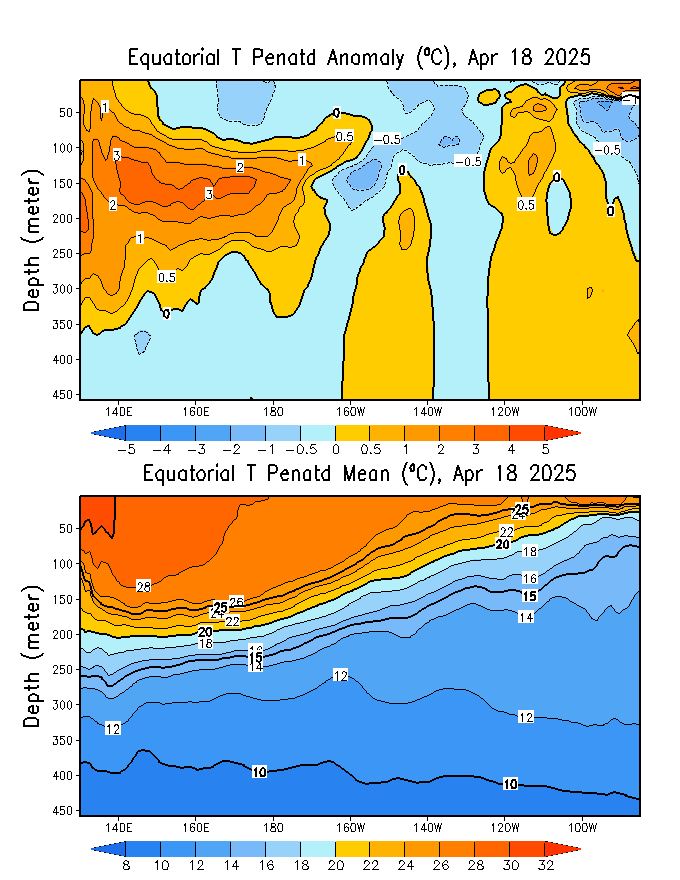

Visual Consistency Testing.
It is useful to see how the full-month forecast fits with the set of partial-month forecasts that we have. These will continue to update in this article. It is important to remember that with the partial-month forecasts, we generally have about 25 days of the subsequent month to look at when we do this at the end of the month as we are doing now. It depends on what day of the week the month ends. So this month, which ended on a Monday, we have short-term forecasts that cover 25 of the 30 days in June so we are in pretty good shape to see if the whole is equal to the sum of the parts.
First Temperature
And Precipitation
Sometimes it is useful to compare the three-month outlook to the forecast for the first of the three months. It shows how much the pattern changes over the three-month period.

One can mentally subtract the First-Month Outlook from the Three-month Outlook and create the Outlook for the last two months in the three-month period.
And with respect to drought, this was also issued on May 31, 2021
Latest Monthly Assessment – Heavy precipitation over the south-central CONUS during May is likely to result in either drought removal or improvement across central Texas and Oklahoma. Persistence is likely for western Texas and also throughout the long-term drought areas of the West. Development is also favored to occur across parts of Washington, Oregon, Idaho and Montana by the end of June due to forecasts favoring below normal precipitation and above normal temperatures. Broad persistence is favored for much of the northern Great Plains due to the long-term drought conditions and varying precipitation forecasts throughout the month. Forecast confidence is low for the northern to central Great Plains since June is one of the wetter months of the year. Drought persistence is also forecast for the Midwest.
Drought removal for parts of the eastern U.S. is most likely across parts of Virginia and the Carolinas due to a relatively wet forecast throughout June. Any lingering drought across southwest Florida is likely to end during June. Persistence is more likely for New England.
Alaska is forecast to remain drought-free through the end of June. Drought persistence is forecast for the Hawaii Islands and development is also favored during the June. Due to a recent drying trend and the latest precipitation forecasts, drought persistence is favored for Puerto Rico.
Has the Drought Forecast changed?
| May 20th Seasonal Outlook | May 31st Single Month of June Outlook |
 |  |
Is there “persistence” in the forecast?
Looking back on May 2021 to relate the forecast for June to the actuals in May.
First May 2021 Temperature (30 out of 31 days).
And then May Precipitation (30 out of 31 days).
We then show the new forecast and the prior month’s actuals (less one day) side by side.
| Prior Month (usually missing one day) | Forecast for current Month | |
| Temperature | ||
| Precipitation |
Conclusion
The purpose of this article was to present the updated Outlook for June 2021 and compare it with the Early Outlook. It is not to critique the updated Outlook for June based on our opinions but we point out possible inconsistencies if we find them. We have assessed the extent to which the monthly outlook seems to fit with the other forecasts provided by NOAA. In reality, all forecasts are obsolete when issued as the situation changes day by day or six hours by six hours i.e. each new model run. In our other articles, we continually examine the current forecasts from NOAA including Day 1- 5, 6-10, 8-14, and Week 3 and 4. So we are continually looking at approximately 25 days into the future.
On June 10, 2021, IRI/CBC will issue their ENSO forecast and we will present that and critique it. We do not expect any surprises with the NOAA June 10 Report. It is an ongoing process and we attempt to provide our readers with the best current assessment of the next approximately 25 days (except when we cover the Four-Season Analysis or medium-frequency cycles such as ENSO in which cases we are looking farther out than 25 days), so our analysis is pretty much ongoing. We also publish a “LIVE” Weather Article which updates in real-time to reflect NOAA Weather Headlines and for those interested provides detailed information down to current warnings in place. All of our reports including past versions of these reports can be located via the Directory/Archive which can be accessed here.



